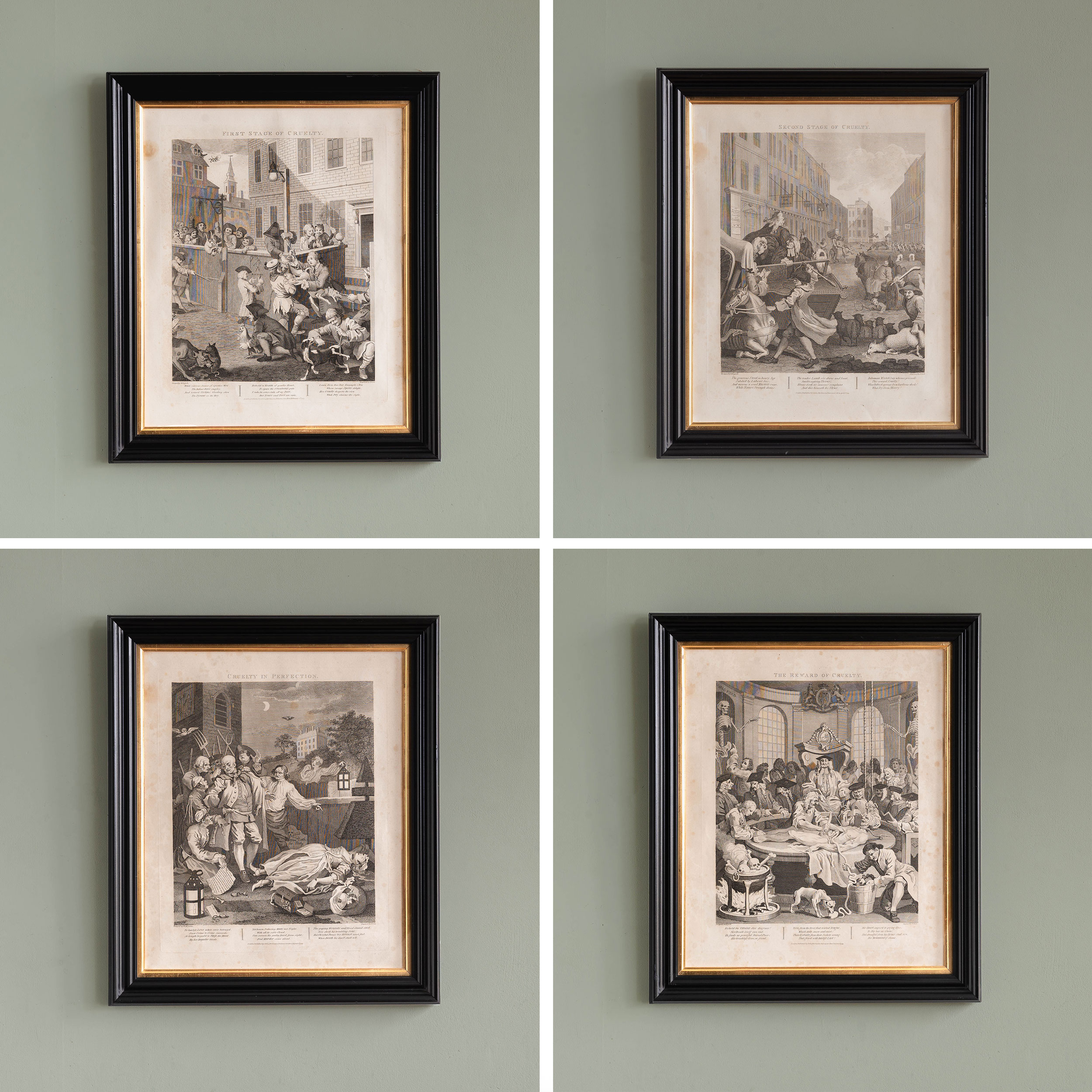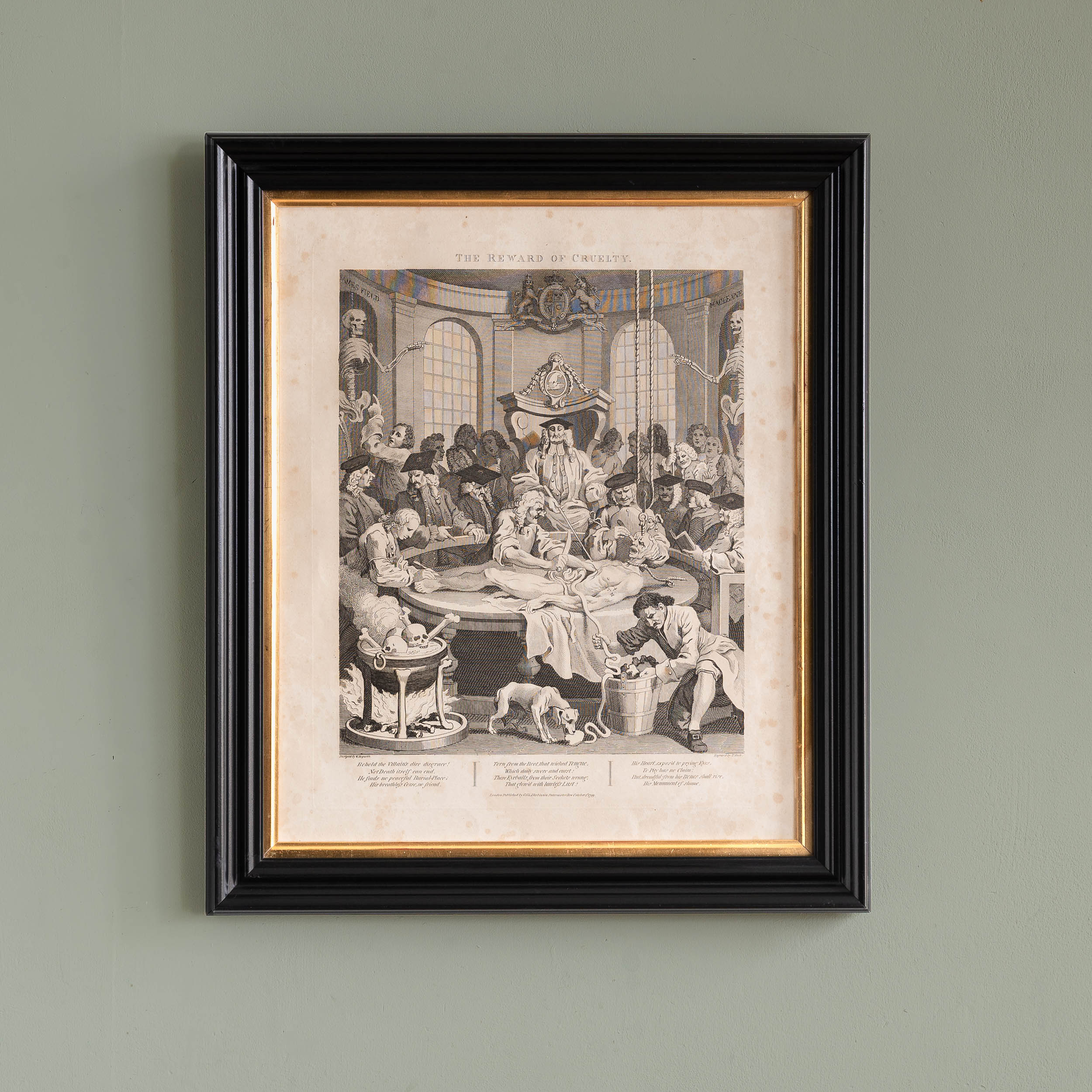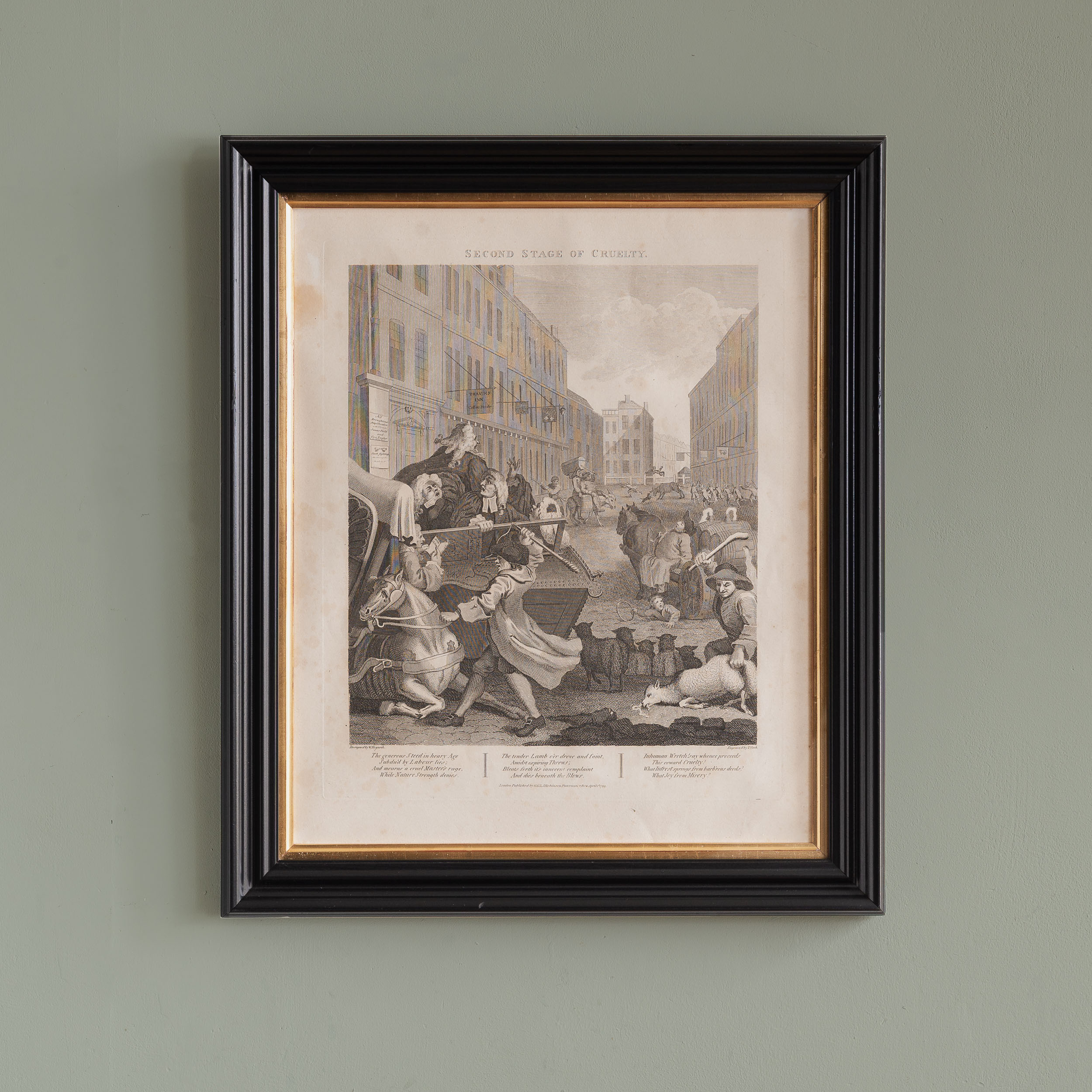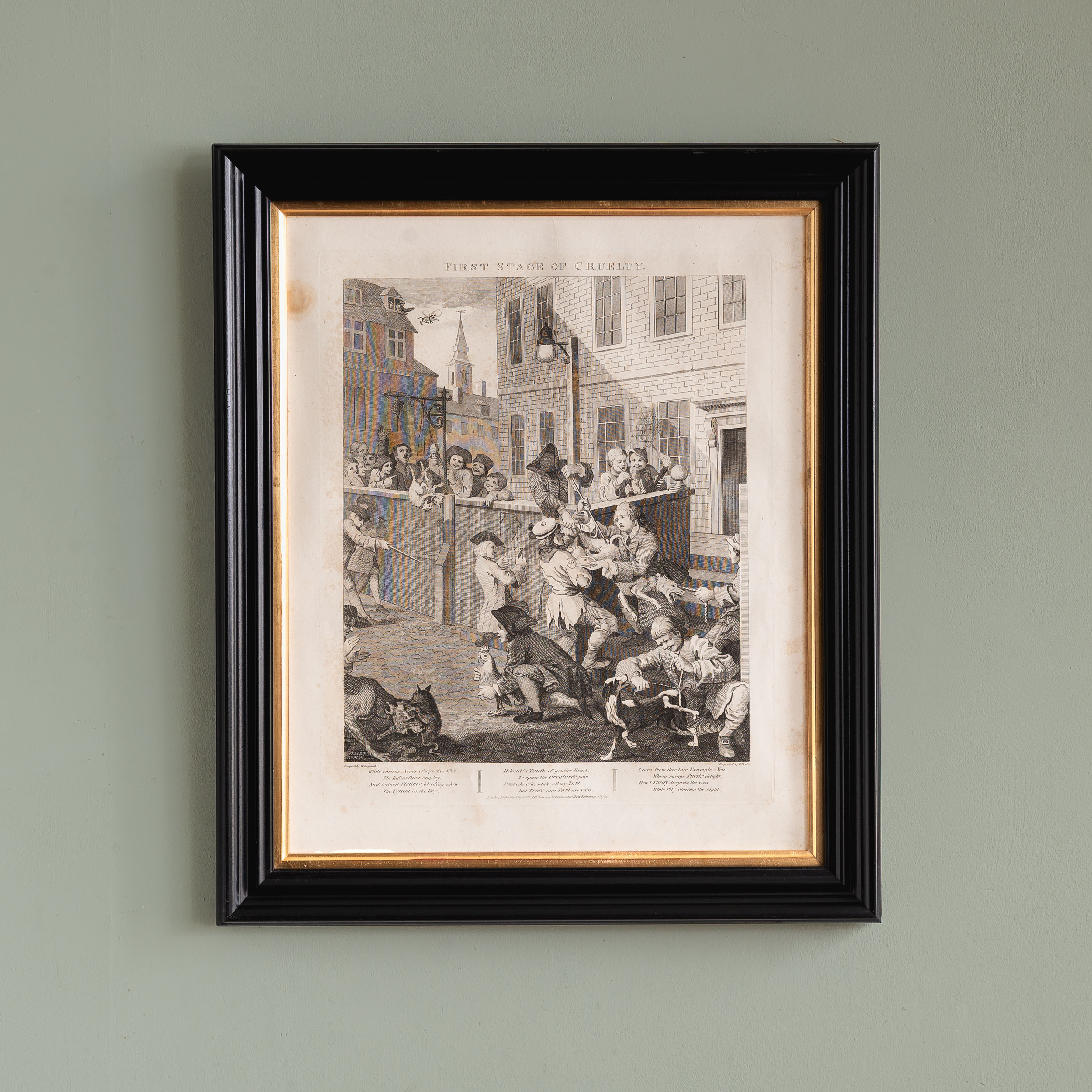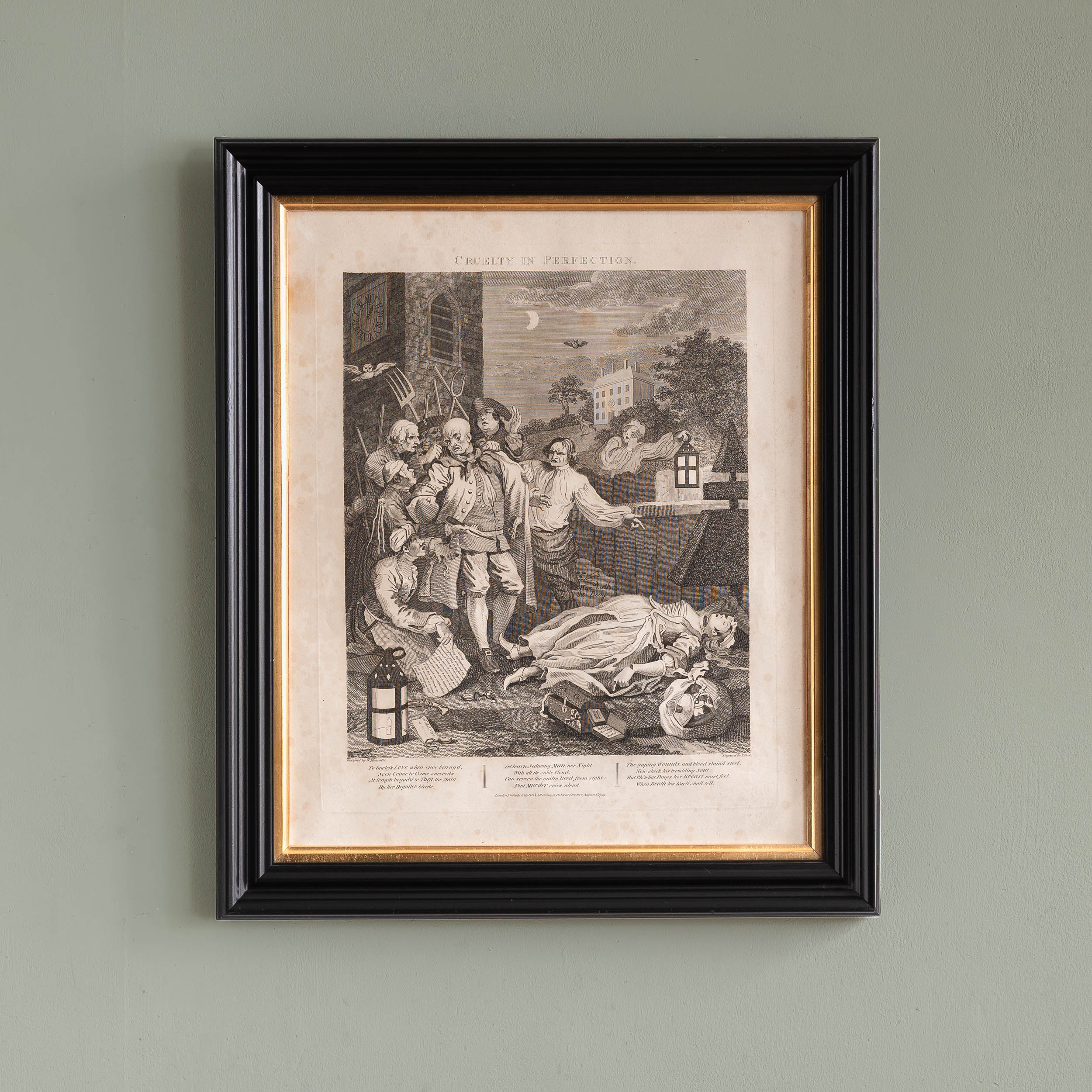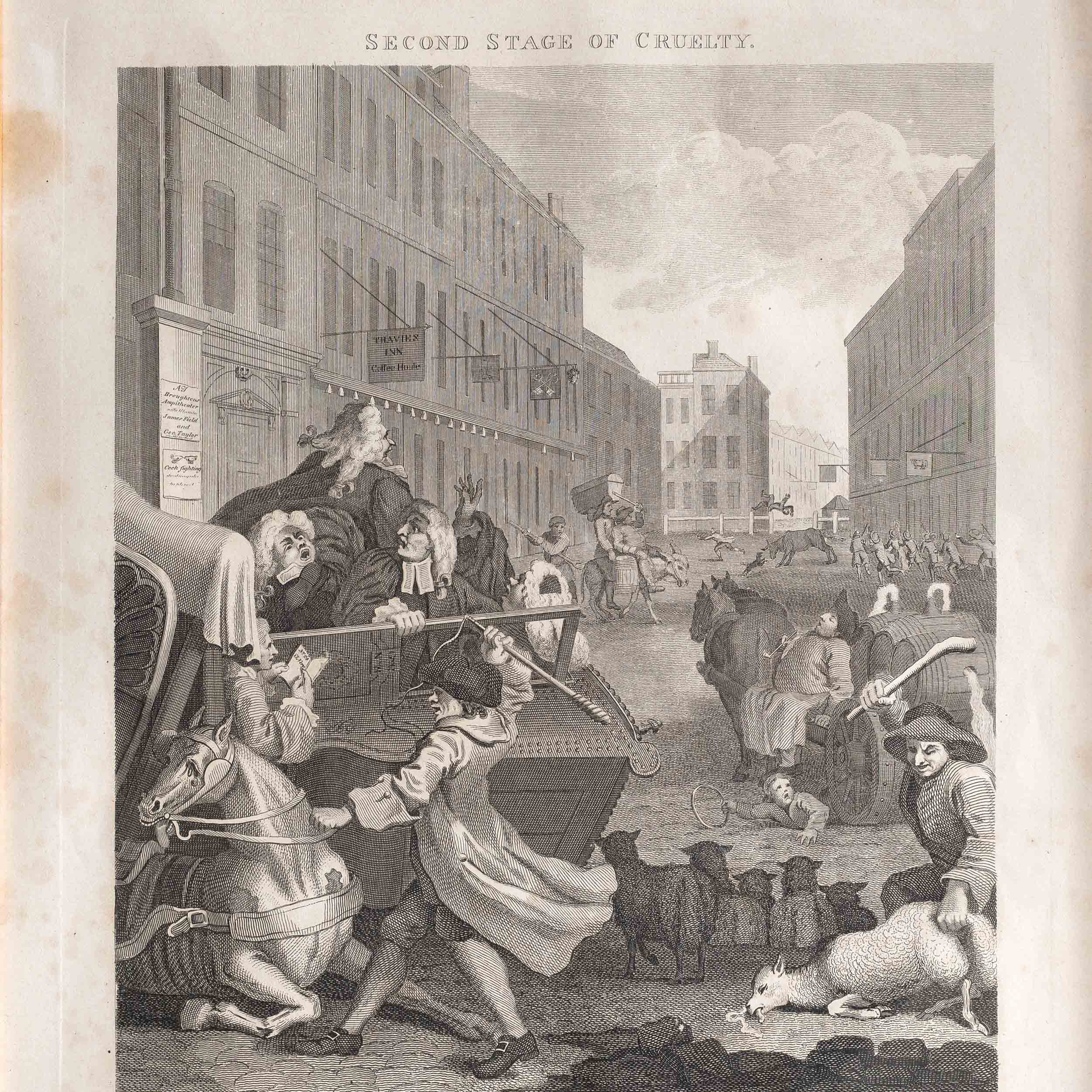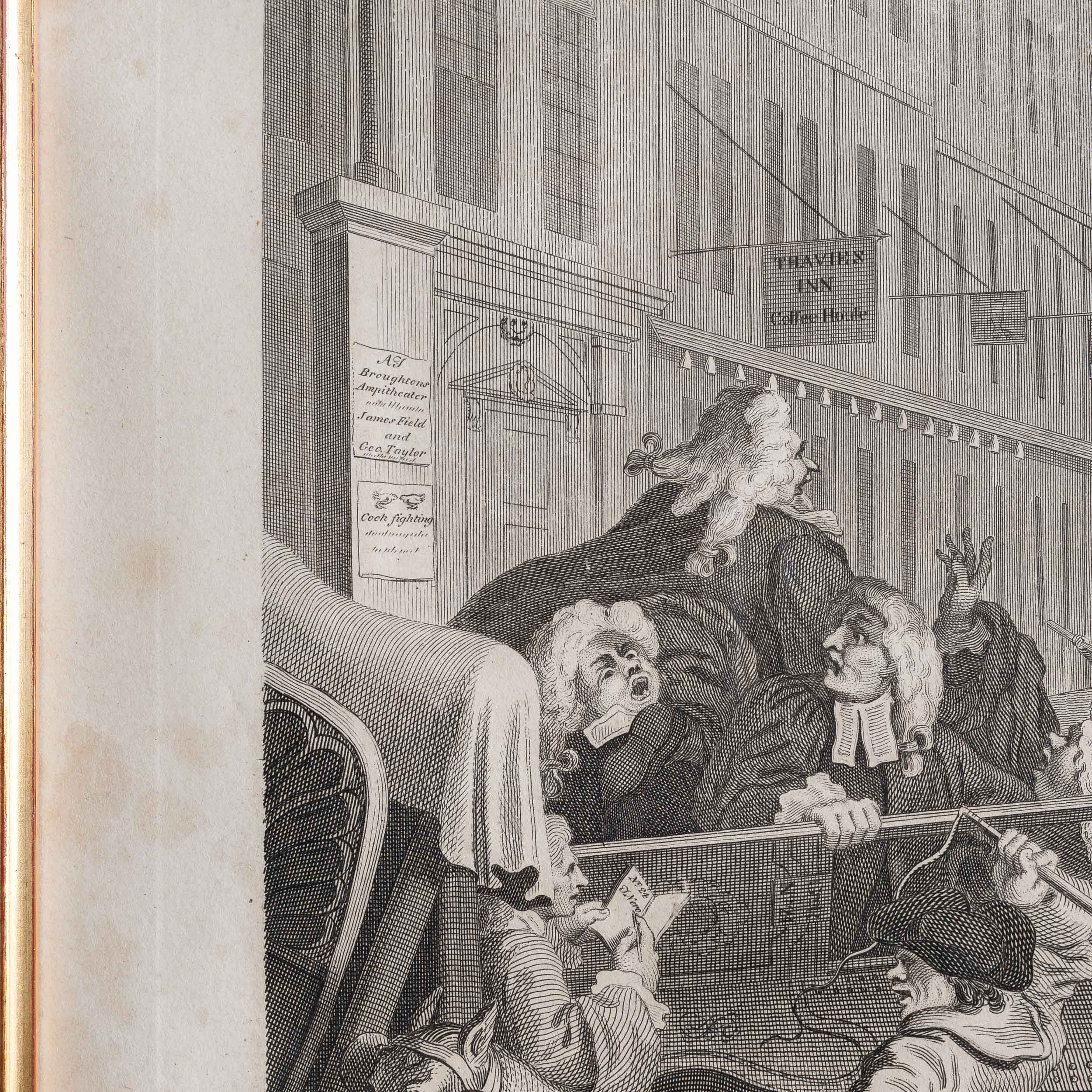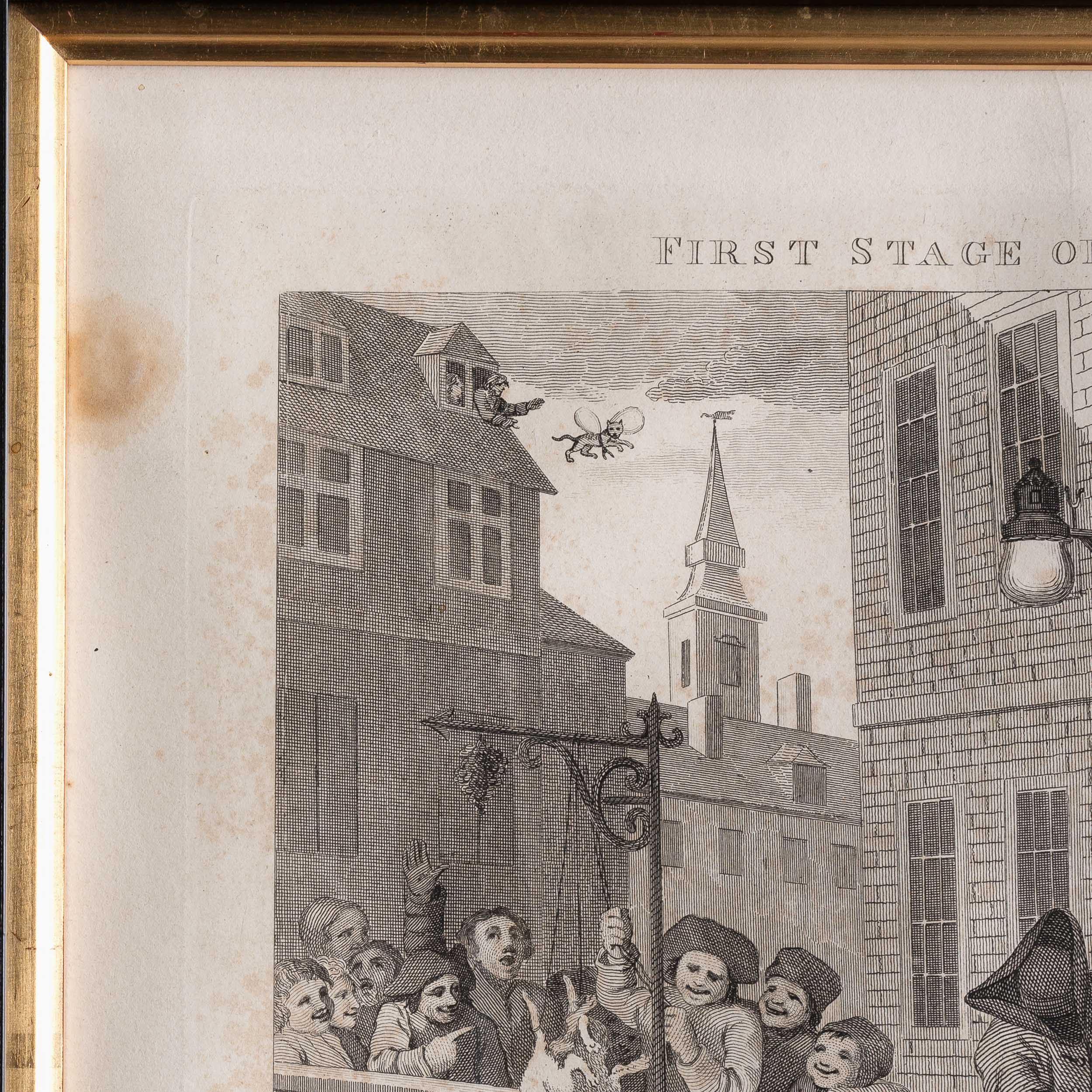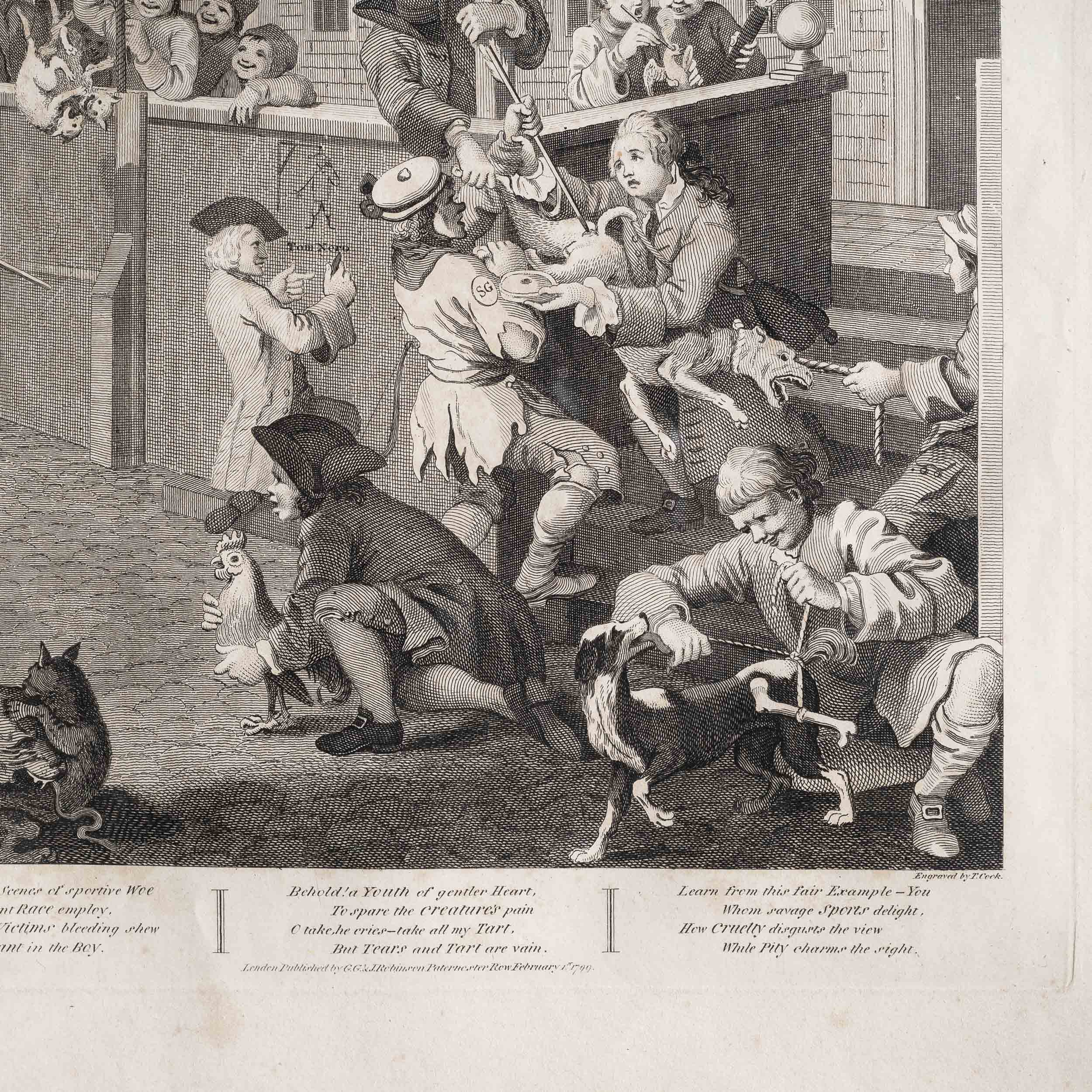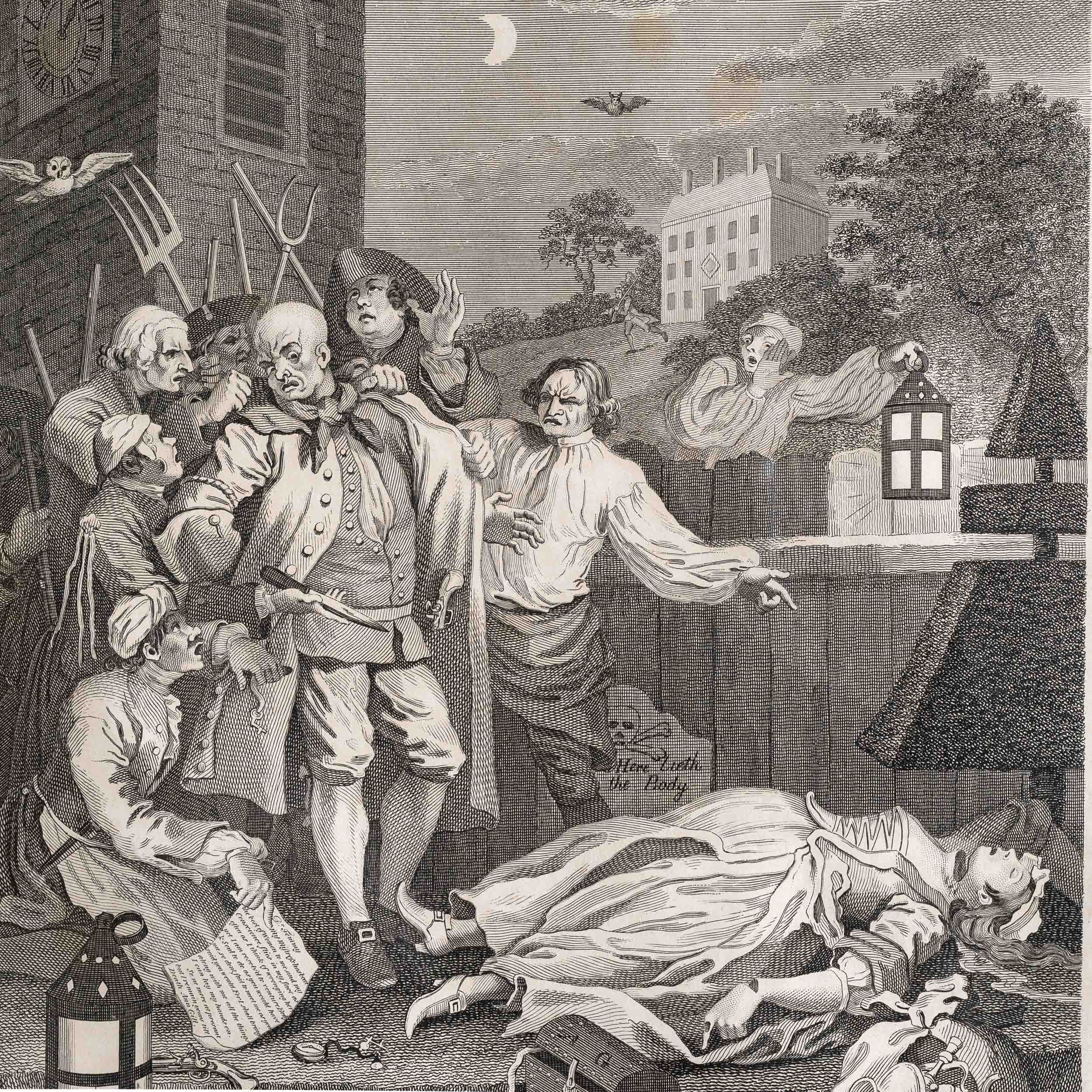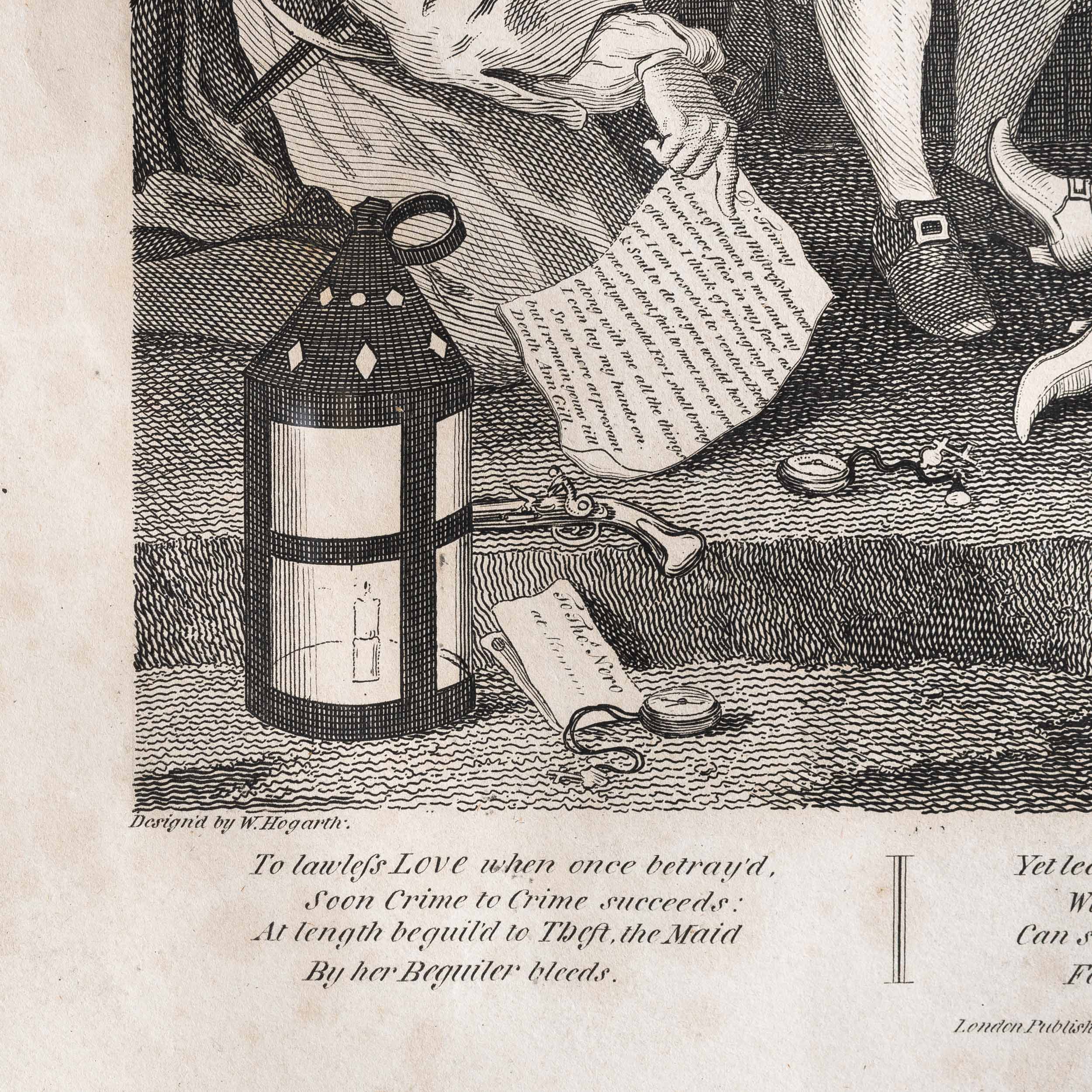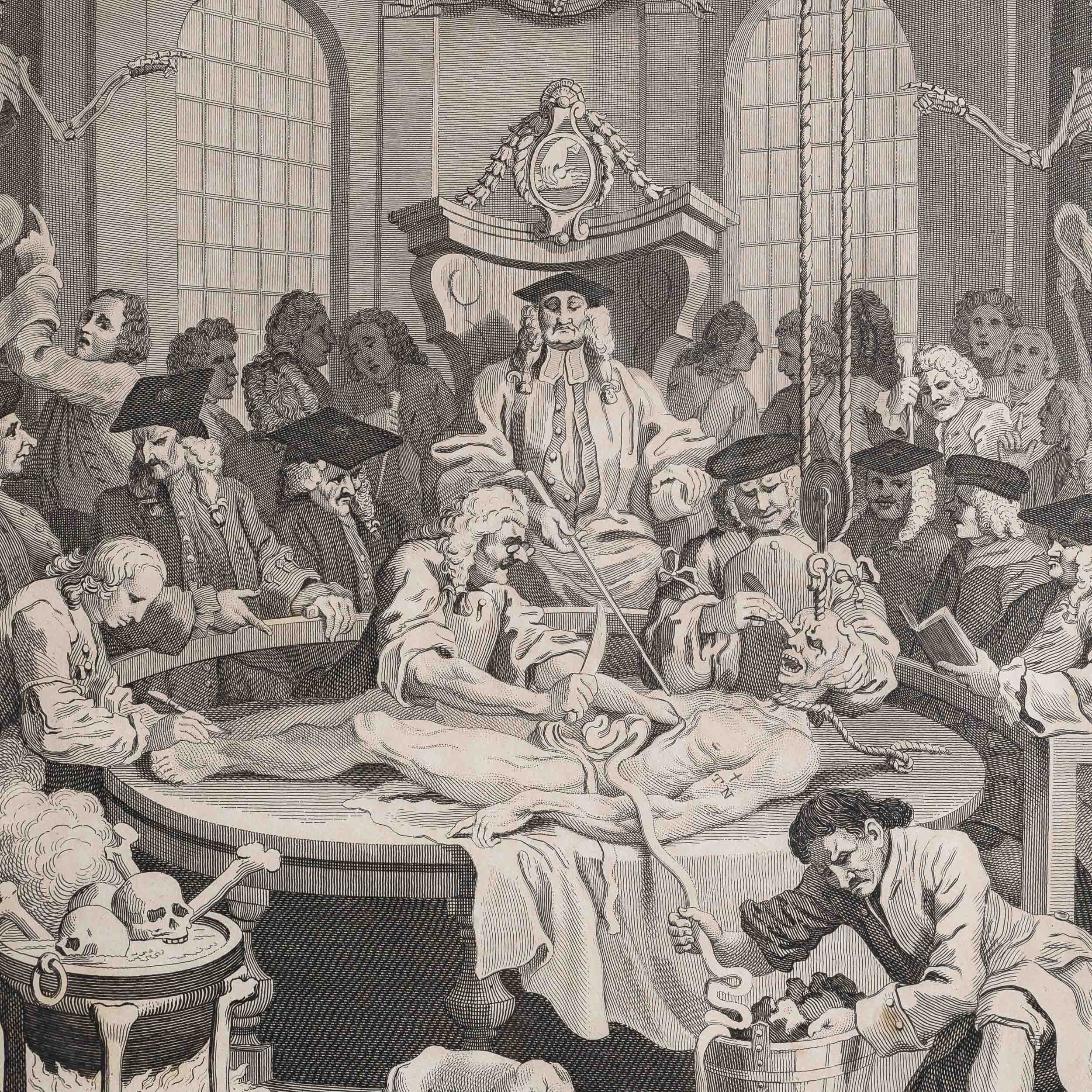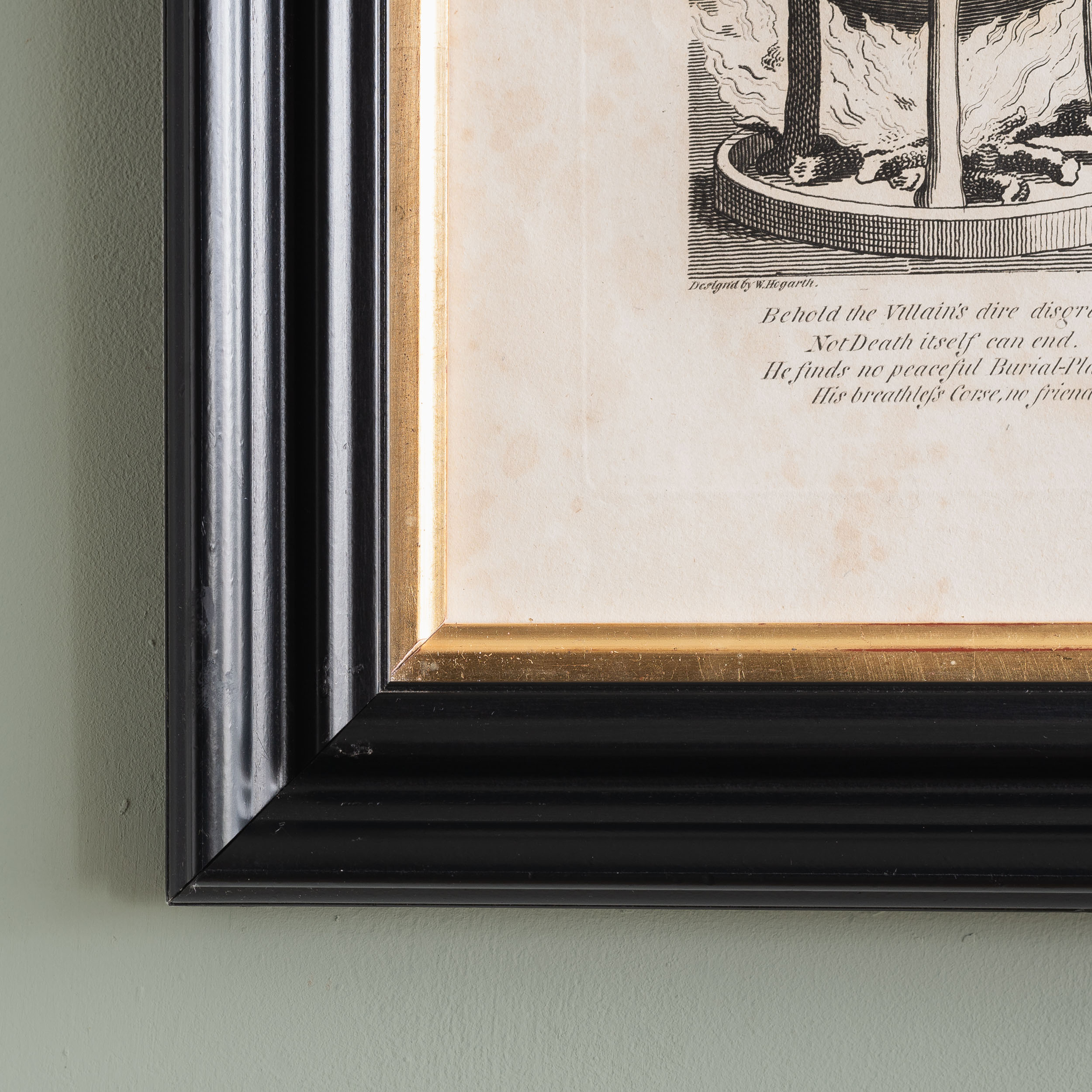Archived Stock - This item is no longer available
The Four Stages of Cruelty after William Hogarth. A set of four copper-engraved prints
The social epidemic of wanton cruelty.
Framed with gold slip
SOLD OUT
Out of stock
First Stage of Cruelty
The first scene shows youths of the area already comfortable in their abuse of animals, almost all of whom are participating in or encouraging the abuse of animals and birds. The worst abuse is being inflicted by Nero, who pushes an arrow into the anus of a terrified dog being restrained by two other boys. Another youth is distressed by what Nero is doing and attempts to stop him by offering a tart. To the left a boy draws a hanged man on the wall and points at Nero’s showing his behaviour will eventually cost him his life.
Second Stage of Cruelty
This scene suggests that the abuse of animals is widespread in the streets of London. A now grown-up Nero beats his horse, the poor creature having collapsed under the strain of the cart. This is overladen with four lawyers, who are too penny-pinching to hire two carts and insensitive to the suffering they are causing. On the left a poster displayed near the door of ‘Thavies Inn Coffee House’ advertises ‘Broughton’s Amphitheatre’, a well-known venue for boxing. ‘James Field’ and ‘George Taylor’, named below, were celebrated pugilists.
Cruelty in Perfection
Nero has embarked on a life of highway robbery and is seen here being apprehended after murdering his pregnant lover, Ann Gill. His grotesque appearance conveys the inherent viciousness of his character and brutalising way of life.
The Reward of Cruelty
Nero has been hanged at Tyburn and his body is being dissected for the purpose of studying anatomy. The chief surgeon sits in the centre on a high-backed chair with the royal coat of arms hanging above, thus resembling a high court judge. This neatly represents the official process of judgement and punishment, which in the case of hanged criminals could extend beyond death itself. The skeletons of dissected criminals were usually refused a Christian burial and subsequently displayed as specimens, as can be seen in the niches to the left and right.

